《操作系统 设计及实现 第2版》
| 作者 | (美)(A.S.塔嫩鲍姆)AndrewS.Tanenbaum 编者 |
|---|---|
| 出版 | 北京:清华大学出版社 |
| 参考页数 | 939 |
| 出版时间 | 1997(求助前请核对) 目录预览 |
| ISBN号 | 7302027145 — 求助条款 |
| PDF编号 | 87612418(仅供预览,未存储实际文件) |
| 求助格式 | 扫描PDF(若分多册发行,每次仅能受理1册) |
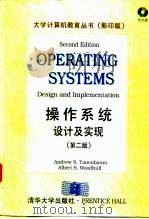
1 INTRODUCTION1
1.1 WHAT IS AN OPERATING SYSTEM?3
1.1.1 The Operating System as an Extended Machine3
1.1.2 The Operating System as a Resource Manager4
1.2 HISTORY OF OPERATING SYSTEMS5
1.2.1 The First Generation(1945-55)Vacuum Tubes and Plugboards6
1.2.2 The Second Generation(1955-65)Transistors and Batch System s6
1.2.3 The Third Generation(1965-1980):ICs and Multiprogramming8
1.2.4 The Fourth Generation(1 980-Present):Personal Computers12
1.2.5 History ofMINIX13
CONTENTS15
PREFACE15
1.3 OPERATING SYSTEM CONCEPTS15
1.3.1 Processes15
1.3.2 Files17
1.3.3 The Shell20
1.4 SYSTEM CALLS21
1.4.1 System Calls for Process Management22
1.4.2 System Calls for Signaling26
1.4.3 System Calls for File Management28
1.4.4 System Calls for Directory Managemen t33
1.4.5 System Calls for Protection35
1.4.6 System Calls for Time Management36
1.5 OPERATING SYSTEM STRUCTURE37
1.5.1 Monolithic Systems37
1.5.2 Layered Systems39
1.5.3 Virtual Machines40
1.5.4 Client-Server Model42
1.7 SUMMARY44
1.6 OUTLINE OF THE REST OF THIS BOOK44
2.1 INTRODUCTION TO PROCESSES47
2 PROCESSES47
2.1.1 The Process Model48
2.1.2 Implementation of Processes52
2.1.3 Threads53
2.2 INTERPROCESS COMMUNICATION57
2.2.1 Race Conditions57
2.2.2 Critical Sections58
2.2.3 Mutual Exclusion with Busy Waiting59
2.2.4 Sleep and Wakeup63
2.2.5 Semaphores66
2.2.6 Monitors68
2.2.7 Message Passing72
2.3.1 The Dining Philosophers Problem75
2.3 CLASSICAL IPC PROBLEMS75
2.3.2 The Readers and Writers Problem77
2.3.3 The Sleeping Barber Problem80
2.4 PROCESS SCHEDULING82
2.4.1 Round Robin Scheduling84
2.4.2 Priority Scheduling85
2.4.3 Multiple Queues86
2.4.4 Shortest Job First87
2.4.5 Guaranteed Scheduling89
2.4.6 Lottery Scheduling89
2.4.7 Real-Time Scheduling90
2.4.8 Two-level Scheduling92
2.5 OVERVIEW OF PROCESSES IN MINIX93
2.5.1 The Internal Structure of MINIX93
2.4.9 Policy versus Mechanism93
2.5.2 Process Management in MINIX95
2.5.3 Interprocess Communication in MINIX97
2.5.4 Process Scheduling in MINIX98
2.6 IMPLEMENTATION OF PROCESSES IN MINIX98
2.6.1 Organization of the MINIX Source Code99
2.6.2 The Common Header Files102
2.6.3 The MINIX Header Files107
2.6.4 Process Data Structures and Header Files112
2.6.5 Bootstrapping MINIX120
2.6.6 System Initialization122
2.6.7 Interrupt Handling in MINIX128
2.6.8 Interprocess Communication in MINIX137
2.6.9 Scheduling in MINIX140
2.6.10 Hardware-Dependent Kernel Support142
2.6.11 Utilities and the Kernel Library145
2.7 SUMMARY147
3 INPUT/OUTPUT153
3.1 PRINCIPLES OF I/O HARDWARE154
3.1.1 I/O Devices154
3.1.2 Device Controllers155
3.1.3 Direct Memory Access (DMA)157
3.2 PRINCIPLES OF I/O SOFTWARE159
3.2.1 Goals ofthe I/O Software159
3.2.2 Interrupt Handlers161
3.2.3 Device Drivers161
3.2.4 Device-Independent I/O Software162
3.2.5 User-Space I/O Software164
3.3 DEADLOCKS166
3.3.1 Resources167
3.3.2 Principles of Deadlock168
3.3.3 The Ostrich Algorithm170
3.3.4 Detection and Recovery172
3.3.5 Deadlock Prevention173
3.3.6 Deadlock Avoidance175
3.4 OVERVIEW OF I/O IN MINIX179
3.4.1 Interrupt Handlers in MINIX180
3.4.2 Device Drivers in MINIX181
3.4.3 Device-Independent I/O Software in MINIX185
3.4.4 User-level I/O Software in MINIX185
3.4.5 Deadlock Handling in MINIX186
3.5 BLOCK DEVICES IN MINIX187
3.5.1 Overview of Block Device Drivers in MINIX187
3.5.2 Common Block Device Driver Software190
3.5.3 The Driver Library193
3.6 RAM DISKS195
3.6.1 RAM Disk Hardware and Software196
3.6.2 Overview of the RAM Disk Driver in MINIX197
3.6.3 Implementation of the RAM Disk Driver in MINIX198
3.7 DISKS200
3.7.1 Disk Hardware200
3.7.2 Disk Software202
3.7.3 Overview of the Hard Disk Driver in MINIX208
3.7.4 Implementation of the Hard Disk Driver in MINIX211
3.7.5 Floppy Disk Handling220
3.8 CLOCKS222
3.8.1 Clock Hardware223
3.8.2 Clock Software224
3.8.3 Overview of the Clock Driver in MINIX227
3.8.4 Implementation of the Clock Driver in MINIX230
3.9.1 Terminal Hardware235
3.9 TERMINALS235
3.9.2 Terminal Software240
3.9.3 Overview of the Terminal Driver in MINIX249
3.9.4 Implementation of the Device-Independent Terminal Driver264
3.9.5 Implementation of the Keyboard Driver282
3.9.6 Implementation of the Display Driver288
3.10 THE SYSTEM TASK IN MINIX296
3.11 SUMMARY304
4 MEMORY MANAGEMENT309
4.1 BASIC MEMORY MANAGEMENT310
4.1.1 Monoprogramming without Swapping or Paging310
4.1.2 Multiprogramming wiith Fixed Partitions311
4.2 SWAPPING313
4.2.1 Memory Management with Bit Maps316
4.2.2 Memory Management with Linked Lists317
4.3 VIRTUAL MEMORY319
4.3.1 Paging319
4.3.2 Page Tables322
4.3.3 TLBs—Translation Lookaside Buffers327
4.3.4 Inverted Page Tables330
4.4 PAGE REPLACEMENT ALGORITHMS331
4.4.1 The Optimal Page Replacement Algorithm331
4.4.2 The Not-Recently-Used Page Replacement Algorithm332
4.4.3 The First-In,First-Out(FIFO)Page Replacement Algorithm333
4.4.4 The Second Chance Page Replacement Algorithm333
4.4.5 The Clock Page Replacement Algorithm334
4.4.6 The Least Recently Used(LRU)Page Replacement Algorithm334
4.4.7 Simulating LRU in Software336
4.5.1 The Working Set Model338
4.5 DESIGN ISSUES FOR PAGING SYSTEMS338
4.5.2 Local versus Global Allocation Policies339
4.5.3 Page Size341
4.5.4 Virtual Memory Interface343
4.6 SEGMENTATION343
4.6.1 Implementation of Pure Segmentation347
4.6.2 Segmentation with Paging:MULTICS348
4.6.3 Segmentation with Paging:The Intel Pentium352
4.7 OVERVIEW OF MEMORY MANAGEMENT IN MINIX356
4.7.1 Memory Layout358
4.7.2 Message Handling361
4.7.3 Memory Manager Data Structures and Algorithms363
4.7.4 The FORK,EXIT,and WAIT System Calls367
4.7.5 The EXEC System Call368
4.7.6 The BRK System Call371
4.7.7 Signal Handling372
4.7.8 Other System Calls378
4.8 IMPLEMENTATION OF MEMORY MANAGEMENT IN MINIX379
4.8.1 The Header Files and Data Structures379
4.8.2 The Main Program382
4.8.3 Implementation of FORK,EXIT,and WAIT382
4.8.4 Implementation of EXEC385
4.8.5 Implementation of BRK386
4.8.6 Implementation of Signal Handling387
4.8.7 Implementation of the Other System Calls393
4.8.8 Memory Manager Utilities394
4.9 SUMMARY396
5 FILE SYSTEMS401
5.1 FILES402
5.1.1 File Naming402
5.1.2 File Structure404
5.1.3 File Types405
5.1.4 File Access407
5.1.5 File Attributes408
5.1.6 File Operations409
5.2 DIRECTORIES410
5.2.1 Hierarchical Directory Systems411
5.2.2 Path Names412
5.2.3 Directory Operations414
5.3 FILE SYSTEM IMPLEMENTATION415
5.3.1 Implementing Files415
5.3.2 Implementing Directories419
5.3.3 Disk Space Management422
5.3.4 File System Reliability424
5.3.5 File System Performance429
5.3.6 Log-Structured File Systems432
5.4 SECURITY434
5.4.1 The Security Environment434
5.4.2 Famous Security Flaws436
5.4.3 Generic Security Attacks439
5.4.4 Design Principles for Security441
5.4.5 User Authentication442
5.5 PROTECTION MECHANISMS446
5.5.1 Protection Domains446
5.5.2 Access Control Lists448
5.5.3 Capabilities450
5.5.4 Cover Channels451
5.6 OVERVIEW OF THE MINIX FILE SYSTEM453
5.6.1 Messages454
5.6.2 File System Layout454
5.6.3 Bit Maps458
5.6.4 I-nodes460
5.6.5 The Block Cache461
5.6.6 Directories and Paths463
5.6.7 File Descriptors465
5.6.8 File Locking467
5.6.9 Pipes and Special Files467
5.6.10 An Example:The READ System Call469
5.7 IMPLEMENTATION OF THE MINIX FILE SYSTEM470
5.7.1 Header Files and Global Data Structures470
5.7.2 Table Management474
5.7.3 TheMainProgram482
5.7.4 Operations on Individual Files485
5.7.5 Directories and Paths493
5.7.6 Other System Calls498
5.7.7 The I/O Device Interface501
5.7.8 General Utilities503
5.8 SUMMARY503
6 READING LIST AND BIBLIOGRAPHY507
6.1 SUGGESTIONS FOR FURTHER READING507
6.1.1 Introduction and General Works507
6.1.2 Processes509
6.1.3 Input/Output510
6.1.4 Memory Management511
6.1.5 File Systems511
6.2 ALPHABETICAL BIBLIOGRAPHY512
APPENDICES521
A MINIX SOURCE CODE LISTING521
B INDEX TOFILES905
C INDEX TO SYMBOLS909
INDEX925
1997《操作系统 设计及实现 第2版》由于是年代较久的资料都绝版了,几乎不可能购买到实物。如果大家为了学习确实需要,可向博主求助其电子版PDF文件(由(美)(A.S.塔嫩鲍姆)AndrewS.Tanenbaum 1997 北京:清华大学出版社 出版的版本) 。对合法合规的求助,我会当即受理并将下载地址发送给你。
高度相关资料
-
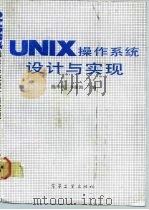
- UNIX操作系统设计与实现
- 1992 北京:电子工业出版社
-
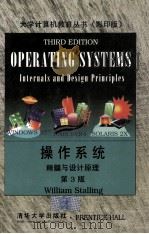
- 操作系统 精髓与设计原理 第3版
- 1998 清华大学出版社
-

- 操作系统课程设计教程
- 1990 上海:上海交通大学出版社
-

- 操作系统教程 UNIX实例分析 第2版
- 1989 西安:西安电子科技大学出版社
-
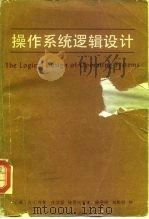
- 操作系统逻辑设计
- 1984 北京:人民邮电出版社
-

- 分布式操作系统设计
- 1993 北京:海洋出版社
-
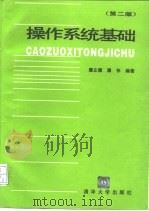
- 操作系统基础 第2版
- 1995 北京:清华大学出版社
-
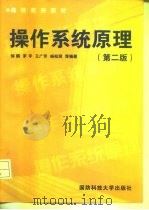
- 操作系统原理 第2版
- 1995 长沙:国防科技大学出版社
-
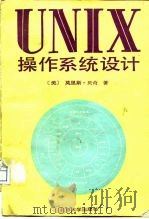
- UNIX 操作系统设计
- 1989 北京:北京大学出版社
-

- 操作系统实验与课程设计
- 1995 武汉:华中理工大学出版社
-

- 操作系统原理与设计
- 1997 北京:北京理工大学出版社
-
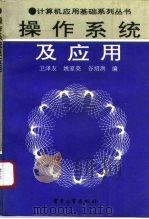
- 操作系统及应用
- 1992 北京:电子工业出版社
-

- 操作系统原理与实现技术
- 1997 合肥:中国科学技术大学出版社
-

- 计算机操作系统 第2版
- 1984 西安:西安电子科技大学出版社
提示:百度云已更名为百度网盘(百度盘),天翼云盘、微盘下载地址……暂未提供。➥ PDF文字可复制化或转WORD
